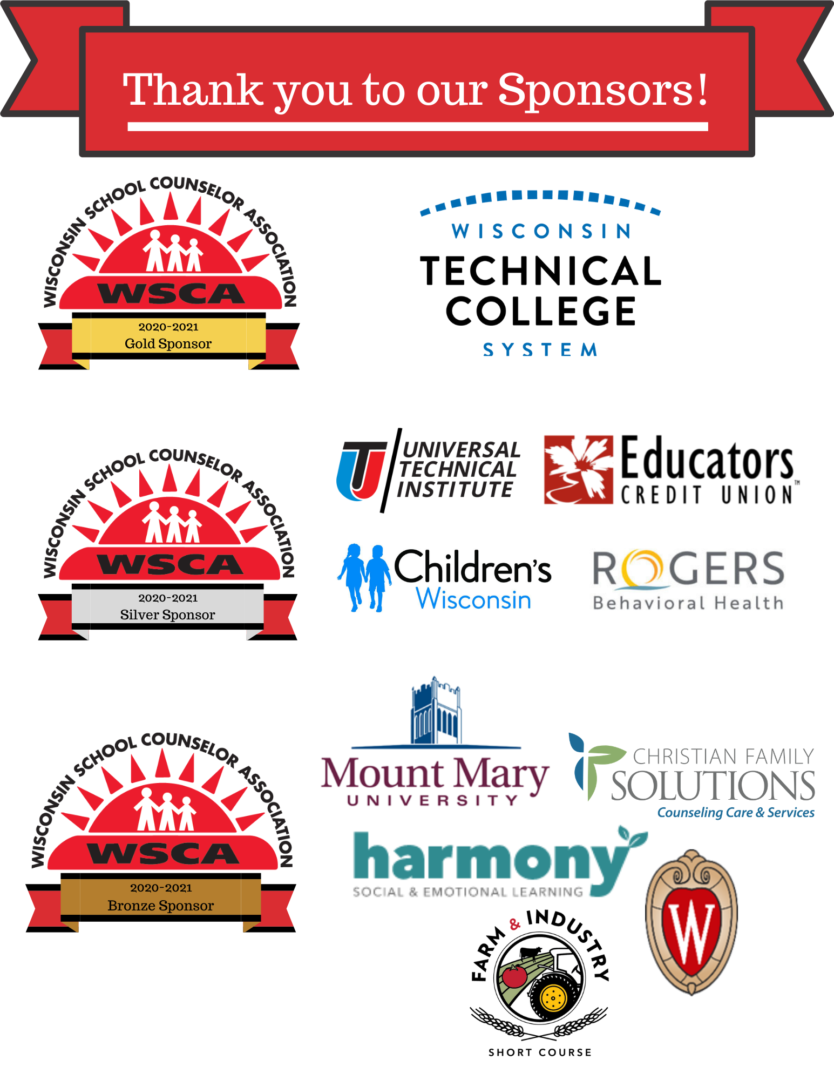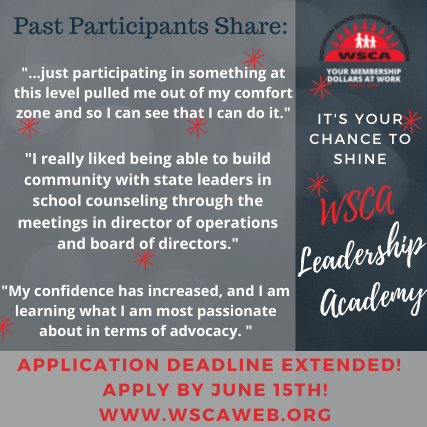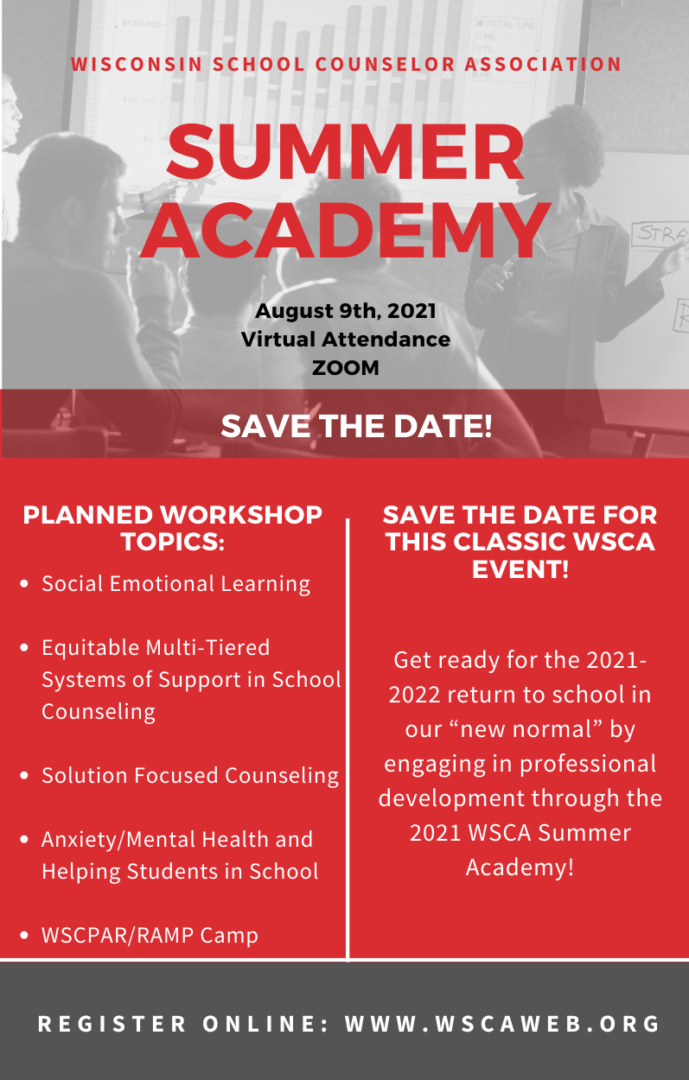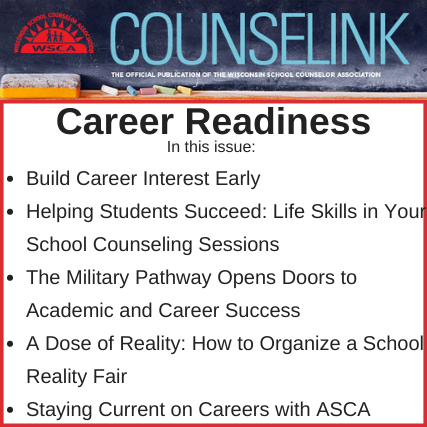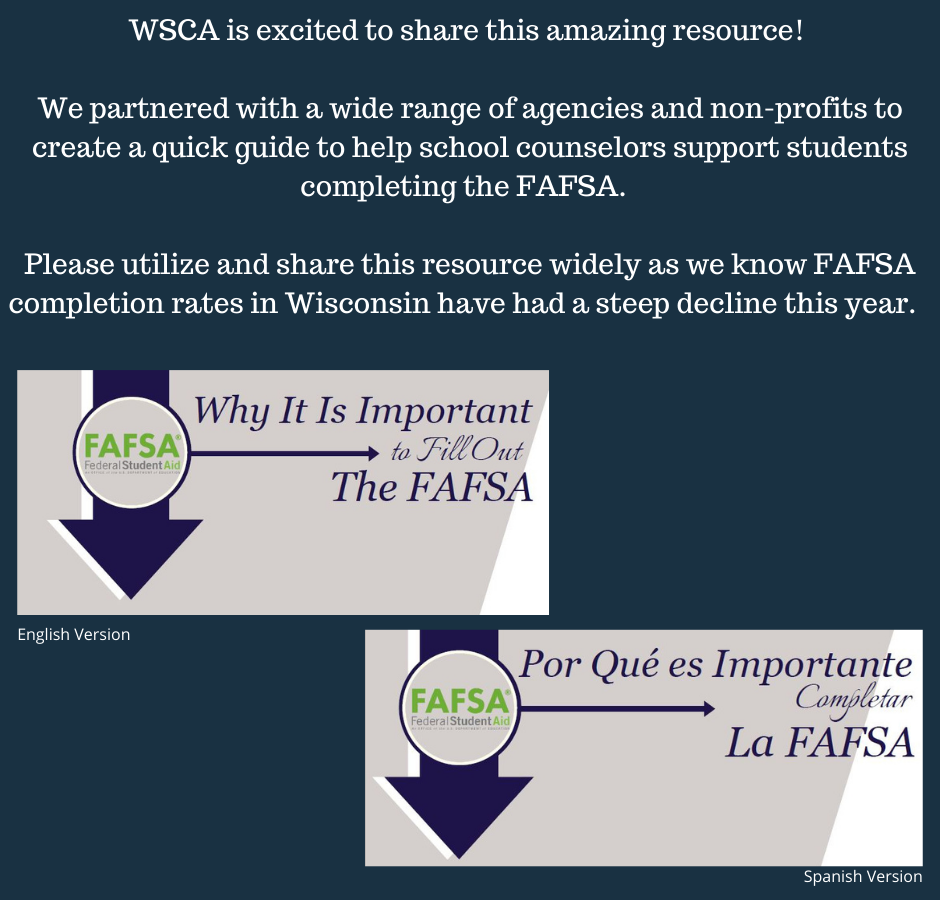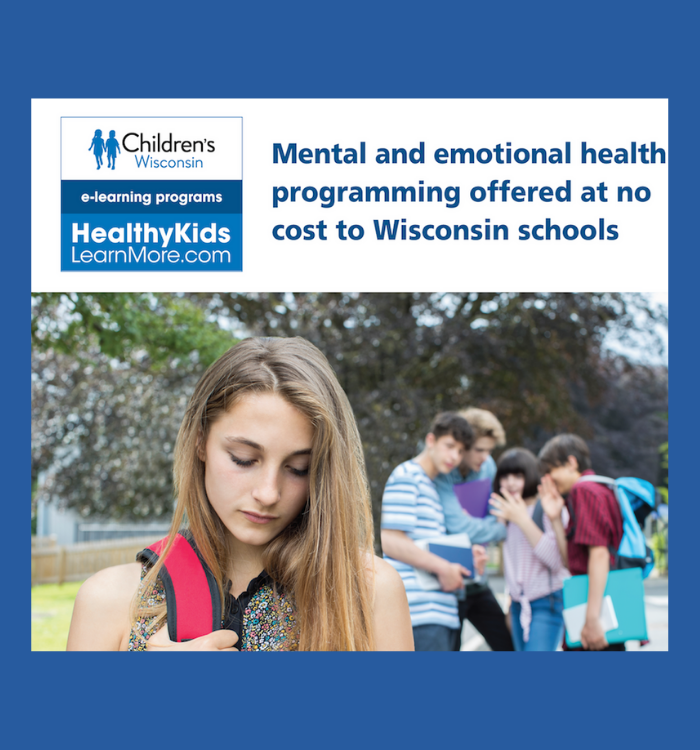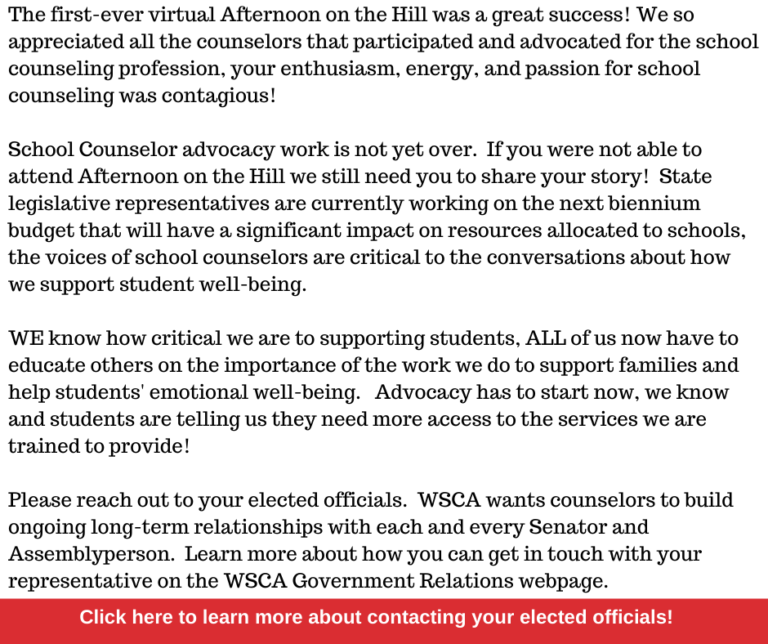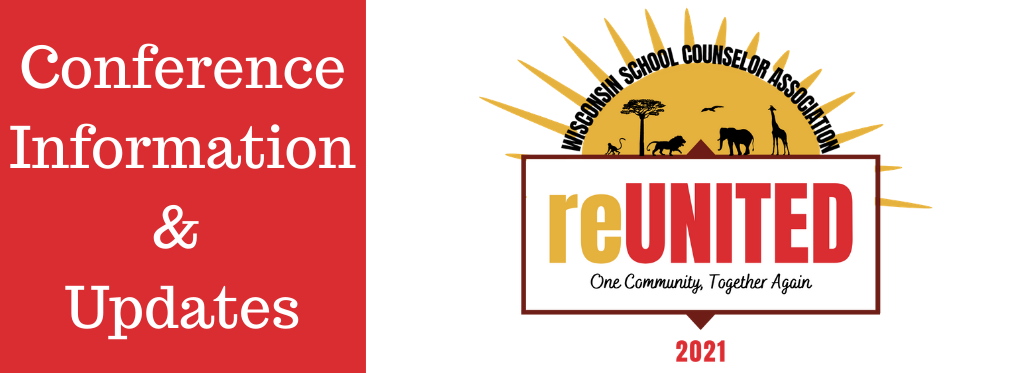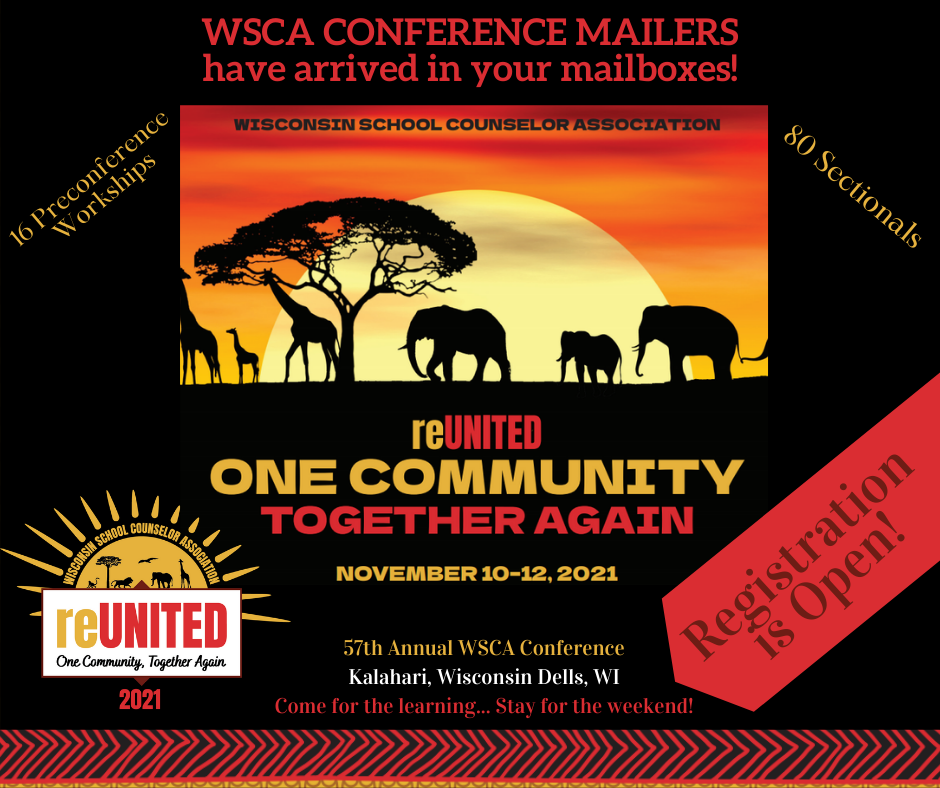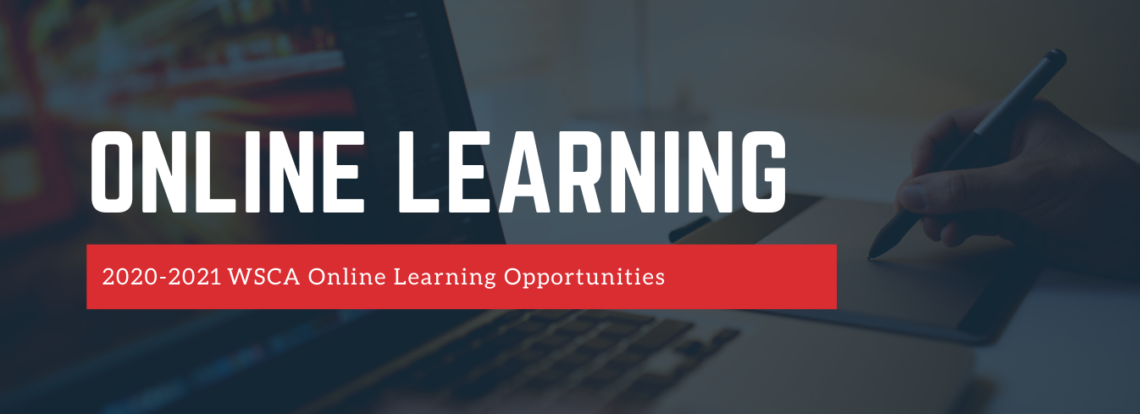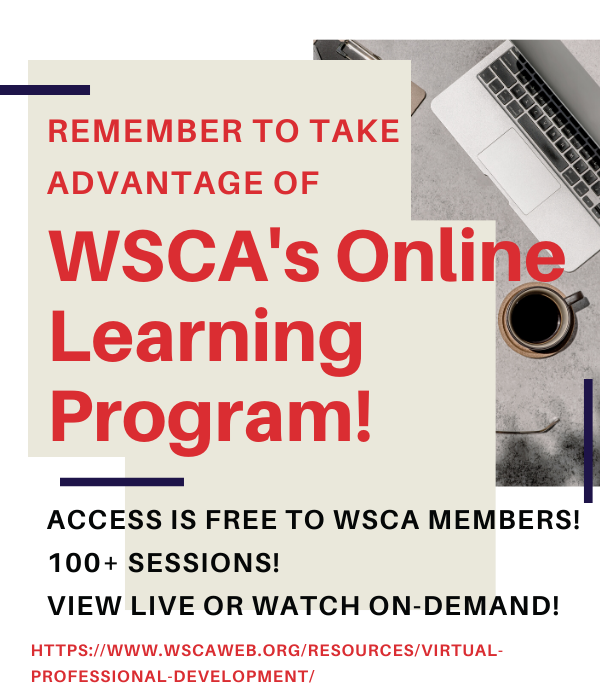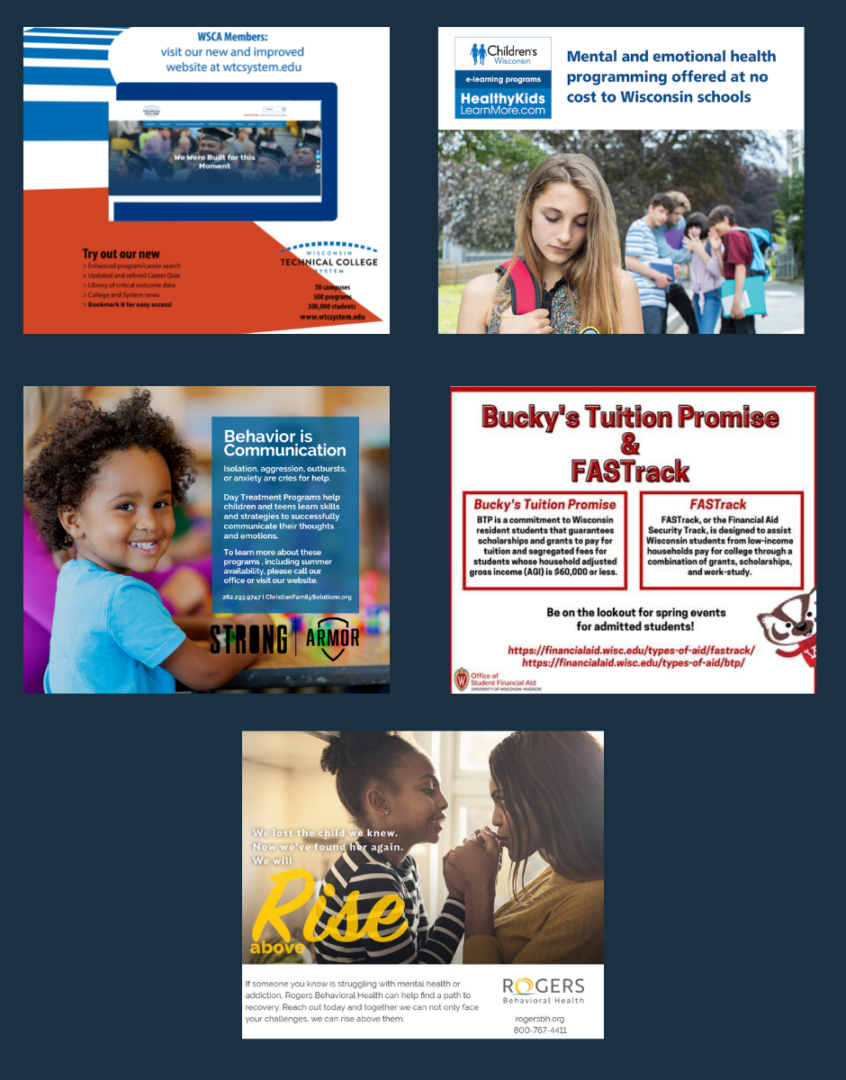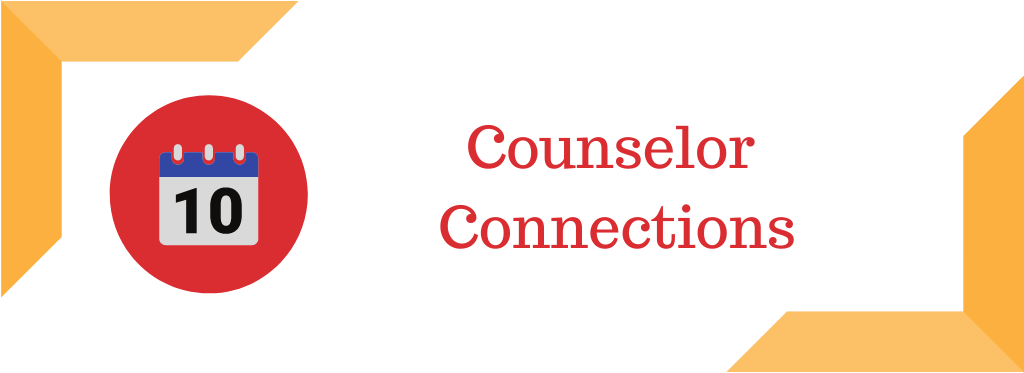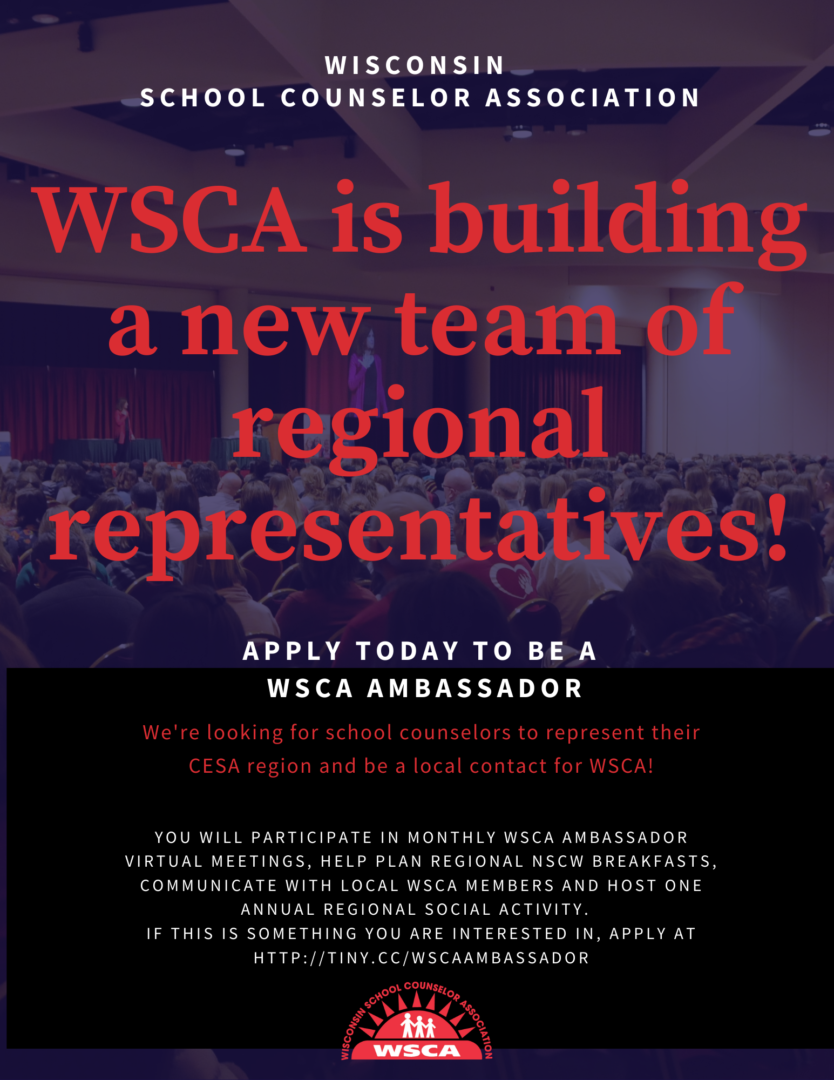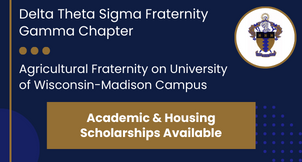
A message from the WSCA Executive Director

Dear WSCA members,
We appreciate your patience in the delayed May WSCAlink newsletter. The WSCA Operations Manager, Nicole, has been out on maternity leave and we truly missed her presence! While we did our best while she was out, we are very excited to have her transition back into the office. Nicole will be working remotely part-time over the summer to have more time with her little one, so don’t be surprised if you happen to hear some sweet baby sounds when calling the WSCA office this summer.
As the school year is wrapping up, I hope all of you also have plans to spend time with your families and friends this summer. We all need the space to decompress, clear our heads, soothe our souls and release the stress that has accumulated over the past year.
WHEN you are ready, we hope you will have some time to take advantage of the amazing online learning program professional development that is available to you as a WSCA member at no cost.
As always, please reach out to us. We are here for YOU.
Stacy
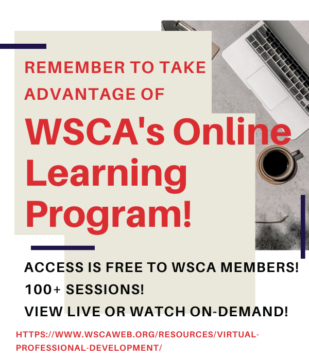
WSCA invested heavily to provide flexible professional development for our members. There are over 100 online learning sessions from state and national experts designed to help you support your students, families, and school communities. Take a look at the upcoming and on demand sessions in the area of Emotional Well Being and Counseling during COVID. Access to the online learning program will continue through the end of July.
https://www.wscaweb.org/resources/virtual-professional-development/

Whew! We’ve almost made it to the end of the ‘20-’21 school year. Unlike any other year, we started back in August full of the angst that comes with the unknown. And despite the fact that some things have become a little more clear to us, we are finishing the year with plenty of continued questions that don’t have answers at the moment. It’s easily understandable that this has taken a toll on all of us (students, staff, parents, communities, literally everyone), and that we may find ourselves feeling less of that end-of-year tired but excited feeling, and more just plain tired.
However, as we head into this summer, there are several things that we DO know that might be helpful for us to reflect on.
- We know that, as the dust settles from the pandemic and the impact becomes more clear, as school counselors we are equipped with all the necessary “tools” to start the cleanup. Our sense of purpose can become laser-focused on helping our students get back to a sense of stability.
- We know that inequities among our students existed before the pandemic and that the gap has widened. We also know that as school counselors we are trained to look for these gaps and we are resourceful enough to find ways to effectively close the gaps for the benefit of ALL students.
- We know that we have the support of our school counseling colleagues across the state and that we can lean on each other, providing encouragement, motivation, and messages of hope that recovery is a reality!
Our association is committed to being a part of the recovery process by focusing our energy and resources toward one outcome: The Wisconsin School Counselor Association exists so there are conditions enabling Wisconsin School Counselors to practice with the highest level of effectiveness using an equity lens to the extent that justifies available resources.
The WSCA Board of Directors remains focused on ensuring that the association is serving school counselors in Wisconsin in a way that is supportive, encouraging, and provides hope as we get busy putting our skills to good use in the recovery process.

Elementary Career Exploration
Sarah Flier, School Counselor
Hudson School District - Willow River Elementary
While students are never too young to learn about careers I opt to do a career unit in 5th grade Life Skills and spend the entire year addressing three goals: learning at least one career they’ve never heard of, exposure to multiple post-secondary options, and understanding the career path of an adult in their life. Throughout these lessons, we dig into learning styles, multiple intelligences and six career clusters: Agricultural Science, Technical Science, Human Services, Communication Arts, Health Sciences, and Business Services. I pull clips for each of these from the Nebraska Career Clusters website which gives students an in-depth understanding of a variety of careers and what kinds of educational backgrounds each requires. I created a worksheet for each cluster and put together a packet for students to follow along with the clips and discussions we have after each lesson. In the end, they have this packet to refer to when doing a research project on a career of their choice.
I am always surprised at how very little our students know about what the grown-ups in their lives do for work! A few years ago I began the “Wolfie Goes to Work” program, which sends home a stuffed wolf (our elementary’s mascot) with each student along with a few questions to interview their adult with. Grown ups were asked to bring Wolfie to their place of work and take a picture – the results were hysterical! Wolfie at one point had fresh ink at a tattoo parlor, donned a hazmat suit at the University of Minnesota laboratory, flew a plane from NYC to LA, and even had laser hair removal! Parents emailed this picture to me, students gave me the interview notes, and I typed this up into a one-sheet report that we then showed the class while the student shared what their grown up does for work.
I also believe it is important for students to understand that college is not the only option for post-secondary education. When I first began teaching careers in 5th grade, I asked students to list all of the types of training there was after high school – the majority only able to name college. Many careers require other forms of education, such as technical or associate’s degrees, apprenticeships and many others can start in the military. We end the unit with a scavenger hunt around our building where I have a poster for each staff member that includes their type of training and where they attended. Students complete the worksheet and get clues to help open a variety of locks on a box with a prize inside (see my blog with a video showing how I use these)! Through our exploration of career clusters with students listening for a variety of post-secondary options along with their interviews for Wolfie Goes to Work and the scavenger hunt, my students can name far more than just college as they head into middle school!
While students are never too young to learn about careers I opt to do a career unit in 5th grade Life Skills and spend the entire year addressing three goals: learning at least one career they’ve never heard of, exposure to multiple post-secondary options, and understanding the career path of an adult in their life. Throughout these lessons, we dig into learning styles, multiple intelligences and six career clusters: Agricultural Science, Technical Science, Human Services, Communication Arts, Health Sciences, and Business Services. I pull clips for each of these from the Nebraska Career Clusters website which gives students an in-depth understanding of a variety of careers and what kinds of educational backgrounds each requires. I created a worksheet for each cluster and put together a packet for students to follow along with the clips and discussions we have after each lesson. In the end, they have this packet to refer to when doing a research project on a career of their choice.
I am always surprised at how very little our students know about what the grown-ups in their lives do for work! A few years ago I began the “Wolfie Goes to Work” program, which sends home a stuffed wolf (our elementary’s mascot) with each student along with a few questions to interview their adult with. Grown ups were asked to bring Wolfie to their place of work and take a picture – the results were hysterical! Wolfie at one point had fresh ink at a tattoo parlor, donned a hazmat suit at the University of Minnesota laboratory, flew a plane from NYC to LA, and even had laser hair removal! Parents emailed this picture to me, students gave me the interview notes, and I typed this up into a one-sheet report that we then showed the class while the student shared what their grown up does for work.
I also believe it is important for students to understand that college is not the only option for post-secondary education. When I first began teaching careers in 5th grade, I asked students to list all of the types of training there was after high school – the majority only able to name college. Many careers require other forms of education, such as technical or associate’s degrees, apprenticeships and many others can start in the military. We end the unit with a scavenger hunt around our building where I have a poster for each staff member that includes their type of training and where they attended. Students complete the worksheet and get clues to help open a variety of locks on a box with a prize inside (see my blog with a video showing how I use these)! Through our exploration of career clusters with students listening for a variety of post-secondary options along with their interviews for Wolfie Goes to Work and the scavenger hunt, my students can name far more than just college as they head into middle school!
While students are never too young to learn about careers I opt to do a career unit in 5th grade Life Skills and spend the entire year addressing three goals: learning at least one career they’ve never heard of, exposure to multiple post-secondary options, and understanding the career path of an adult in their life. Throughout these lessons, we dig into learning styles, multiple intelligences and six career clusters: Agricultural Science, Technical Science, Human Services, Communication Arts, Health Sciences, and Business Services. I pull clips for each of these from the Nebraska Career Clusters website which gives students an in-depth understanding of a variety of careers and what kinds of educational backgrounds each requires. I created a worksheet for each cluster and put together a packet for students to follow along with the clips and discussions we have after each lesson. In the end, they have this packet to refer to when doing a research project on a career of their choice.
I am always surprised at how very little our students know about what the grown-ups in their lives do for work! A few years ago I began the “Wolfie Goes to Work” program, which sends home a stuffed wolf (our elementary’s mascot) with each student along with a few questions to interview their adult with. Grown ups were asked to bring Wolfie to their place of work and take a picture – the results were hysterical! Wolfie at one point had fresh ink at a tattoo parlor, donned a hazmat suit at the University of Minnesota laboratory, flew a plane from NYC to LA, and even had laser hair removal! Parents emailed this picture to me, students gave me the interview notes, and I typed this up into a one-sheet report that we then showed the class while the student shared what their grown up does for work.
I also believe it is important for students to understand that college is not the only option for post-secondary education. When I first began teaching careers in 5th grade, I asked students to list all of the types of training there was after high school – the majority only able to name college. Many careers require other forms of education, such as technical or associate’s degrees, apprenticeships and many others can start in the military. We end the unit with a scavenger hunt around our building where I have a poster for each staff member that includes their type of training and where they attended. Students complete the worksheet and get clues to help open a variety of locks on a box with a prize inside (see my blog with a video showing how I use these)! Through our exploration of career clusters with students listening for a variety of post-secondary options along with their interviews for Wolfie Goes to Work and the scavenger hunt, my students can name far more than just college as they head into middle school!

What’s New with Children’s Wisconsin’s Act Now! Bullying Prevention
In 2021, Children’s Wisconsin e-Learning has launched several new bullying prevention resources for schools and families, expanding our Act Now! offerings. Developed in collaboration with the Wisconsin Department of Public Instruction (DPI), Act Now! is an online bullying prevention curriculum that aligns with DPI and CASEL SEL competencies and supports the Wisconsin Model Academic Standards for School Counseling.
The all-new Act Now! Cyberbullying mini-course for grades 9-12, our first course for high school-age students, addresses what has become a serious issue that affects the mental and emotional health of teens across the country. The mini-course teaches teens what cyberbullying is, what impact it has on all involved, important steps to take if they are being cyberbullied, and what they can do to stop it as a bystander. Positive ways to use social media, as well as what social media sites are doing to prevent and stop cyberbullying, are also discussed.
ParentsActNow.com is a newly updated website that offers a series of informative videos to help parents and caregivers understand and learn how to handle the different types of bullying situations that may affect children and teens, whether at school, at home, or in the community. The website has a fresh new look and includes all new videos that focus on identifying, preventing, and responding to cyberbullying. This is a great resource to share with your school community and families.
In addition to these new resources, Children’s Wisconsin continues to offer a continuum of bullying prevention e-learning courses for students in grades K-8 at no cost to Wisconsin schools. Our full range of health education programming for Wisconsin schools includes Mental and Emotional Health (Healthy Minds), Bullying Prevention (Act Now!), Alcohol, Tobacco & Other Drugs Prevention (It’s UR Choice), and Nutrition and Physical Activity (Mission: Health).
Find more information at healthykidslearnmore.com.
To speak with a Children’s Wisconsin e-learning representative, email healthykids@chw.org.
You Spoke, We Listened
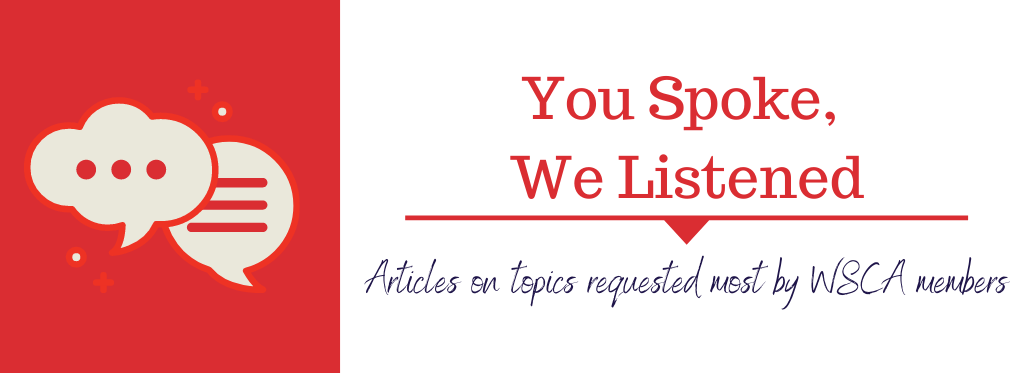
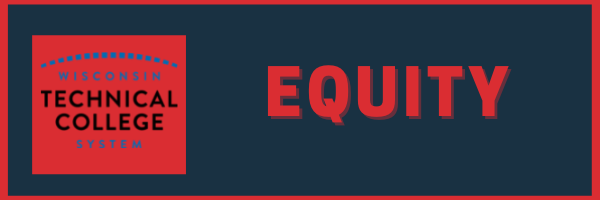
Career & Employment Services within the student service continuum
By Sara Mackey
There are many services available to Wisconsin’s students at all levels, many of which are conducted by middle and high school counselors. But getting in front of students is a challenge, much less scheduling time and getting students engaged in this pandemic-induced sometimes-virtual world. In the spirit of collaboration and cooperation for the students, all education advocates play a part in student success. This is especially true when we consider our work a continuum of valuable and relevant services to students in all stages of their education. In that vein, it’s never too early to refer students to the many resources, including the Employment Services (CES) department at Wisconsin’s technical colleges.
For all types of students
The CES department does much more than helping graduates find work. Madison College Lead CES Advisor Rochelle Wanner explained. “Students should consider us for all points in exploring career pathways, to discovering careers specific to the college before becoming a student – to finding a part-time job or internship while a student, to a full-time job after graduating and even as an alumnus – we are here to assist.”
A common goal: student retention and success
Just as all student influencers – parents, grandparents, school counselors and instructors – want to support young people’s success, a CES team member may be able to advise a student or potential student about all aspects of a potential career selection. Other units within each of the technical colleges offer services for students in middle and high school that can support the critical work Wisconsin’s middle and high school counselors are doing with students to help explore career pathways specific to the college.
Unique challenges in a unique time
Managing expectations for students regarding their education – in terms of cost of education, amount of time required, outcomes and other matters is especially important when everything else is uncertain. CES staff advise students when certain programs may require additional steps and/or expenses needed for enrollment. For example, certain public safety or education programs may require a background check. In some cases, the program may require the purchase of certain tools or supplies over and above tuition that could make it cost prohibitive. Advisors can alert students to potential challenges they might face in the job and successful outcomes they could enjoy. This consultation can help build students’ confidence that the time and money they are about to spend is done so efficiently. But for younger students, it also helps them focus on what they can do now to ensure their future success. Wanner views it as a holistic approach. “We serve undecided students and students who have solid, clear career paths, plus anyone in between. We help students overcome barriers to employment such as academic, financial, disability, single parent, ELL (English Language Learners) unemployed and non-traditional employment.”
Advising through the lens of equity includes understanding potential challenges students may have and navigating ways to overcome them. An example of gender equity from the standpoint of “non-traditional employment” Wanner notes, may be to help women pursue careers they are passionate about. If that means their gender makes them a minority in that program, they can try to prepare for that and seek mentors or other help to overcome any challenges related to that. The same can be said for men who want a career traditionally held by women, so they can also navigate potential challenges. These are just a few reasons why students benefit from seeking advising – including from CES – early on.
For students uncertain what their options are or what career path to take, CES staff can help them explore potential careers through a series of assessments and interest inventories. The department has a number of tools at their disposal to help focus the student’s search.
Career advising for a virtual age
Additional aspects of advising may include resume writing and interview assistance. As a student progresses in their program, instructors often advise them to seek internships and other valuable job experience. For postsecondary students, the CES staff can often help students locate and apply for internships. CES staff are also a great resource for learning about campus jobs, called Work Study or Student Help, which pay well above median wage and can be very helpful to students who want to work while enrolled in classes.
Wanner says the department is a “hidden gem that students should seek out” even if the student feels prepared for the path they are taking. “We are very interested in meeting the student’s needs by helping them to understand their interests, values, strengths and maybe even shortcomings. Sometimes it is a journey, but one that we can work together on.” Another advantage of the CES is they are linked up with many other student services at the college, so they can make recommendations or referrals for students when appropriate. This dedicated department at all Wisconsin Technical Colleges is important for student retention as much as for student success.
Help evolves with students’ needs
Wanner said the CES department adds tools based on changing student needs. Wanner said CES recently added two new resources one called Focus 2 for career exploration and Handshake, for job searching. Handshake is free to students to seek opportunities online and reach out to potential employers. Its focus includes entry level jobs for new graduates. It also connects employers to students or graduates of particular programs. Handshake also has other valuable tools, including virtual networking, job fairs, and conferences relevant to job seekers. These tools can help make the difference between a student taking a job and finding a fulfilling and successful career.
If the other end of the spectrum is students, alumni or mid-career people, CES also has a number of services geared to help. For example, the college provides access to a “WorkSmart Network” for individuals who have been laid off or are unemployed seeking new opportunities. Collaborating with the state’s Workforce Development Board, many of the same services available to enrolled students are offered, but these specific advisors work closely with local employers. They may connect students who meet certain qualifications to local companies struggling to hire the staff for certain positions. As many advisors are conducting triage for friends and acquaintances who may be struggling with job or financial pressures, please consider your technical college’s CES Department. To secure help for students at various points in their career, please also consider your local technical college. There are a number of departments dedicated to helping future college students plan their education and career pathways.
Visit www.WTCSystem.edu to learn more about the Wisconsin Technical College System.
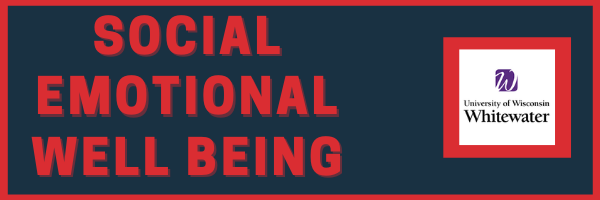
Post-secondary Education with a Disability
By: Betsy Brandt & Marissa Rehor
Deciding about whether or not to pursue additional education after high school can be one of life’s biggest decisions. It’s important for all students to think about how ready they are for college. There are many post-secondary educational options and some students choose to wait to enroll at a university. Some important factors for each student to consider include:
- How is the student currently advocating for their needs?
- How independently is the student managing their time, assignments, and personal care?
- i.e. getting up on their own?, taking meds according to directions on their own?
- How does the student handle stress and schedule changes?
- What is the student’s current support system and what might they need in college?
- How motivated is the student to do homework, study for tests, etc.?
- Is the student ready to live independently and make good decisions for themselves?
Students with disabilities will also want to explore accommodations that are offered at a university. It’s important to understand the difference between accommodations and modifications. At the post-secondary level, modifications (changes to course curriculum or requirements) aren’t typically made for individual students. Extra time for tests is a typical accommodation; modifying a given test is not (i.e. decreasing the number of options on a multiple-choice test). Students should advocate for themselves with the support of the campus disability office/department and utilize their approved accommodations.
Students should start college preparation and exploration early in their high school career.
School Counselors can help by having the student consider the following questions:
- What accommodations is the student using?
- Will those accommodations be offered in college? If not, have them gradually decrease the use of those accommodations.
- Does the student struggle with test anxiety?
- Offer the student suggestions on how to cope with test anxiety or refer them to someone who can
- How are the student’s study skills? Does the student need to spend time developing college-level study skills?
- What type of learner is the student?
- Is the student knowledgeable about how their disability affects academics?
- Does the student have a full-time aide?
- Are there things the aide helps with that the student could do on their own?
- Is the student organized?
- What types of tools could you or teachers give the student that could translate to college?
- Does the student ask for help?
- If not, encourage them to!
- Advocacy is very important in post-secondary ed.
- Is the student connected to vocational rehab (DVR)?
- Have the student call or email the disability services office to start the process of getting accommodations set up.
Setting up services at each individual institution will vary. Typically, the process includes filling out an application and turning in the required documentation.
Post-secondary education can be a very positive experience and can help the student get prepared for the adult world! The more prepared a student is; the more positive that experience will be!
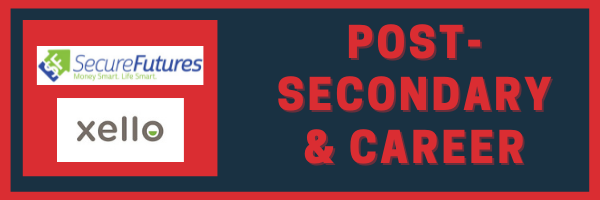
Secure Futures & Xello
High school students are making some of the most significant decisions of their lives, as they consider which path to pursue after graduation. As a school counselor, you have a challenging but deeply vital role in this process, and you know that students need reliable information and guidance in order to make the best possible choices about their future. Did you know there is a robust, exciting tool available right now, free of charge, to help you walk with students towards success?
The Money Path app, created specifically for high school students, uniquely links academic and career planning with financial planning. This web-based software is available at no cost to all schools throughout the state of Wisconsin, and counselors at Wisconsin public schools can access the app today directly through the Xello platform. Available at the crucial time when teens are making decisions about adult life, Money Path sets them on a course to reach their lifelong career and financial goals.
Money Path guides students through a step-by-step simulation of life after graduation. They identify a path: college, an apprenticeship, military service, or direct entry into the workforce. Then, using Money Path’s up-to-date data on career starting salaries and post-secondary education costs, students plan how to pay for school, develop a real life budget, set savings goals, and compare different paths side by side to envision the long-term impact of their decisions.
School counselors can integrate the app into the schools universal Academic and Career Planning curriculum or use it with students individually or in small groups, as a discussion guide and to highlight different aspects of post-secondary decision-making.
Since Money Path was first rolled out in 2018, more than 8,000 young people have benefitted from the app. Ninety-five percent of Money Path users said the app will be useful in helping them build a good plan for their financial future. Miles, a high school senior in Milwaukee, described Money Path as “a really eye-opening experience.” “It also got a conversation started with my parents, which makes us more prepared,” Miles said. “In my family we haven’t really talked about finances. It was a very helpful tool overall in deciding how to plan the rest of my future, especially financially.”
SecureFutures, the Milwaukee-based nonprofit that created Money Path, has been empowering teens with financial capability since 2006, with programs that have helped close to 90,000 teens chart a more secure future.
Get more information on Money Path at securefutures.org/money-path, or by contacting Patrick Armstrong at patrick@securefutures.org.


